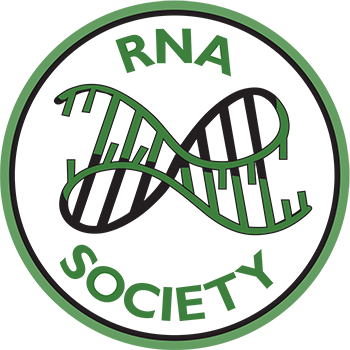Vladimir Presnyak, PhD.Written by: Jean Ge, PhD. Posted: January 8, 2025  With the development of RNA therapeutics advancing at an unprecedented pace, the healthcare and pharmaceutical industry is entering an “RNAissance” era. RNA, a molecule that was viewed as a transient and passive player between DNA and protein, has now been shown as a vital, dynamic, and active component in various biological processes and as an attractive candidate for drug development. Through extreme versatility and programmability, combined with the development of powerful computational and bioinformatics tools, RNA therapeutics is revolutionizing the treatment and prevention of human diseases. All of this would not have been possible without legions of RNA biologists over the years and industry scientists like Dr. Vladimir Presnyak, who believe in the potential of RNA therapeutics and choose to dedicate their careers to achieving that potential. Having been on the frontline of the RNA field for nearly two decades, Dr. Presnyak spent the first half of that time in academia, later moving on to industry, where he strives to harness the therapeutic potential of RNA. His passion for the field was ignited early on by Dr. Harold Smith during his bachelor’s degree studies at the University of Rochester. Dr. Smith also influenced the decision to take the industry path by helping him get a summer internship at a biotech startup. This brief exposure to the industry side of science, early on in his academic career, significantly changed the way he thought about his career path and contributed to his decision to obtain a PhD. After graduating from the University of Rochester, through Dr. Smith, Dr. Presnyak connected with Dr. Laurie Read at SUNY Buffalo. He worked in her lab as a technician for two years, studying RNA editing in the mitochondria of trypanosomes. In Dr. Presnyak’s own words, he was “definitely hooked on the world of RNA at that point.” He sought out a PhD program specifically at institutions that had strong RNA programs, landing at the RNA Center at Case Western Reserve University in Dr. Jeff Coller’s lab. During his PhD, Dr. Presnyak was fascinated by the world of mRNAs and ribosomes, working to understand the interplay between mRNA translation and decay and how mRNA sequence characteristics help regulate those processes. Dr. Presnyak immersed himself in the vast scientific literature in this field, spending much time digesting the foundational work by prominent researchers, such as Dr. Rachel Green, Dr. Joan Steitz, Dr. Nahum Sonenberg, and Dr. Thomas Cech. The approaches taken by these scientists shaped the way Dr. Presnyak frames scientific questions and his approaches to problem-solving.
After obtaining his PhD, Dr. Presnyak became a scientist at Moderna, where he had the opportunity to apply his knowledge about mRNA to therapeutics and to broaden his scientific base by learning new computational and general drug development skills. Much different from academic research, drug development involves close collaboration between teams with a diverse range of functions, people with different backgrounds, and additional skills beyond science itself: ‘This was particularly true at Moderna, whose complex drug product involved a mRNA and a lipid delivery system, both of which had their own challenges and required an even wider skillset than typical small molecule or protein biologic products.’ His transition to industry was challenging – it requires adapting to the rapid pace, multiple concurrent projects, the politics and the communication of a much larger collaborative environment, on top of the incredible breadth of expertise required to understand drug development. Dr. Presnyak realized early on that one part of the solution was to focus on learning new skills that would allow him to navigate the new environment. However, an equally important part was the trust, support, and mentorship he received from his managers, mentors, and colleagues. This is why he enjoys paying it forward and strives to offer the same to his colleagues today. Then came the most memorable moment of Dr. Presnyak’s career so far, unexpectedly, without him knowing at that moment, on a quiet and unremarkable day in early January 2020. He was leading the sequence design function with the Computational Sciences group at the time. A colleague in the protein design group, Dr. Elisabeth Narayanan, had passed along a proposed vaccine antigen for an obscure virus to him and his colleague Dr. Mihir Metkar, asking for a nucleotide sequence design to test. Dr. Metkar worked through the design algorithm and they reviewed the sequence and sent it off for the vaccine group to test. Nothing was out of the ordinary – all of the heavy lifting had already been done during the years that Dr. Presnyak and the team had spent developing their design approach – this was quite a typical day in their lives at the time. A month later, that obscure virus was given the name of SARS-COV-2 by the International Committee on Taxonomy of Viruses (ICTV) and was ‘definitely no longer obscure.’ The exact sequence that they designed was speeding its way towards a human trial just a couple of months down the road and then towards emergency use authorization in the USA by the Food and Drug Aministration and by the European Medicines Agency in an unprecedented feat in vaccine development. In December 2020, Dr. Presnyak (and countless others) received the first dose of that exact same mRNA that he and Dr. Mihir had designed about 11 months earlier. Dr. Presnyak’s career also progressed. In 2022, he took a senior leadership role at a small company dedicated to solving key challenges in the mRNA therapeutics space, ReNAgade Therapeutics (acquired by Orna Therapeutics in May 2024). Leading a diverse group of computational and laboratory scientists across RNA Sciences, Gene Editing, NGS, Computational Biology, and Informatics, Dr. Presnyak and his team initially focused on mRNA delivery, ‘a challenge that has hampered many companies from bringing RNA-based therapies to clinic as fast as they would like.’ His responsibilities have shifted away from thinking about research directly to providing scientific input into strategic decisions, enabling appropriate information flow inside and outside the company, and supporting the people on his team. He also had the opportunity to work with a seasoned leadership team, learn from their experiences, and benefit from their mentorship. Through his own journey, Dr. Presnyak realized that much of one’s success in later stages depends on expanding your scientific skills and intuition, as well as a constellation of indirectly related skills, like communication, people leadership, political acumen, and business strategy. Also, he considers that ‘many times it is impossible to recognize key moments in life until they are behind us,’ so ‘keep learning!’ as Dr. Presnyak says. Dr. Presnyak’s favorite class of RNA is, you guessed it - mRNA! Dr. Presnyak’s favorite RNA article is “Translation elongation and mRNA stability are coupled through the ribosomal A-site.” The article originates from his PhD mentor’s lab and ‘bring new clarity to the ideas that I had worked on in the lab and brings a new level of rigor and understanding to the phenomena that we had previously described’ about the interplay between translation and decay of mRNAs.’ Dr. Presnyak has attended the RNA Society Annual Meeting since 2014 and enjoys learning about the aspirations and concerns of young scientists, as well as the other mentors during mentorship sessions! So, make plans to participate in 2025 and catch him at a presentation, in networking sessions, or at the mentoring lunch. Or, connect with him on social media LinkedIn with a note when sending your invite. |
